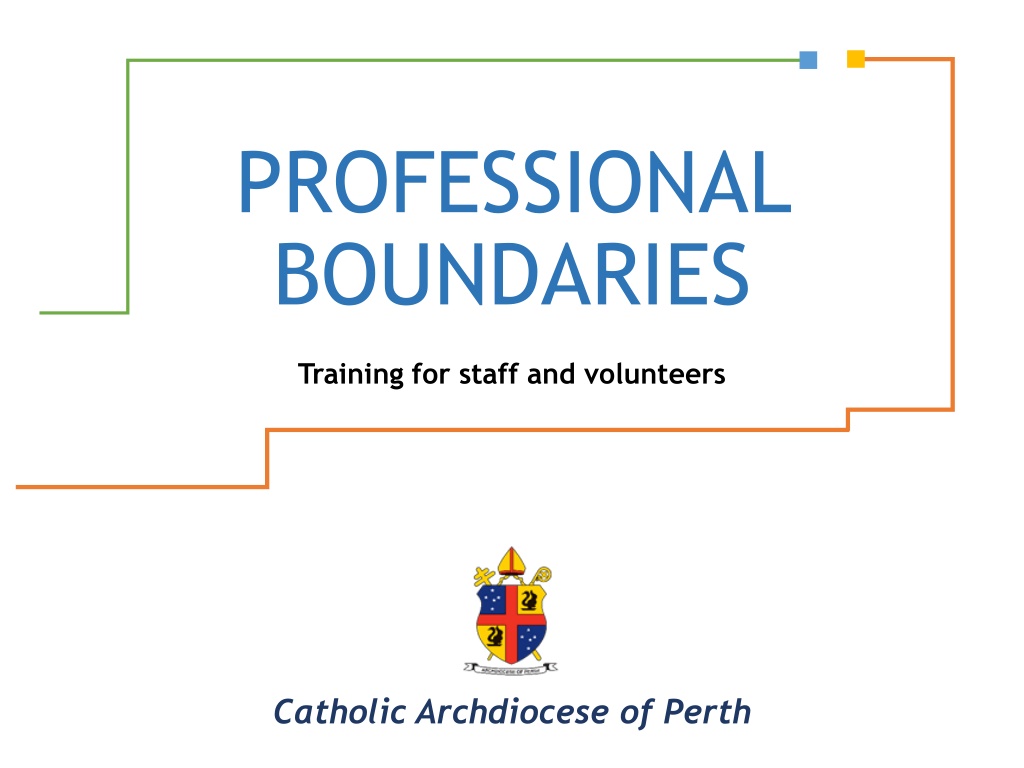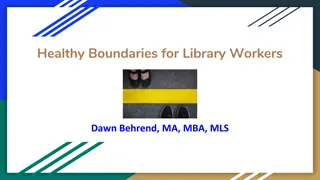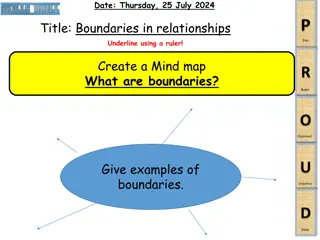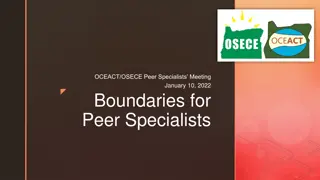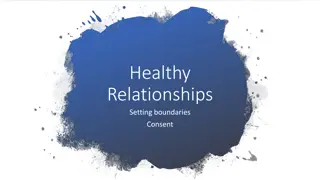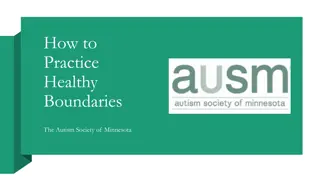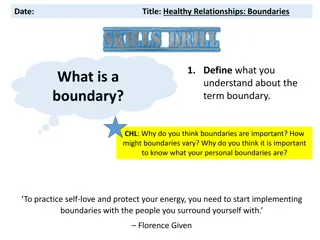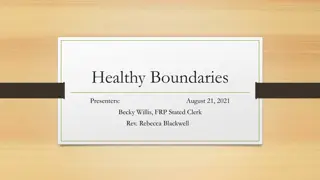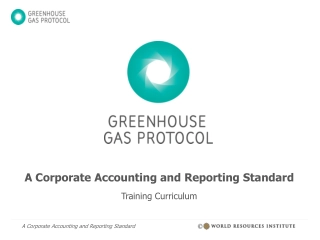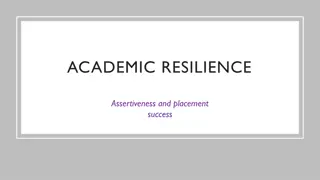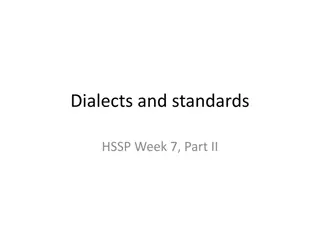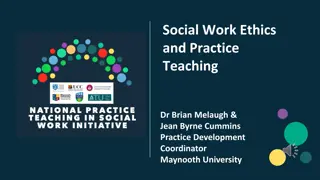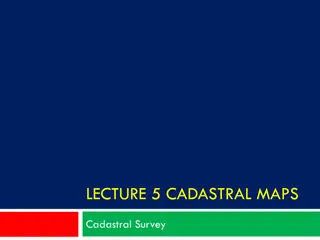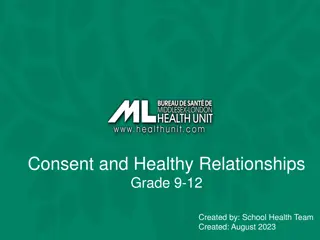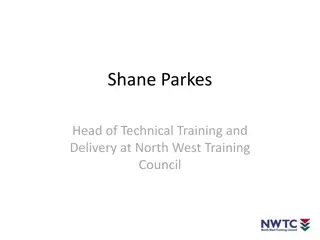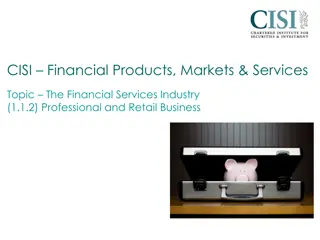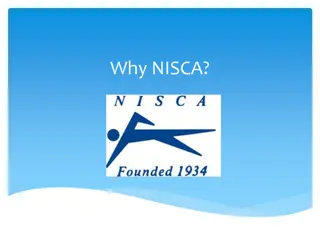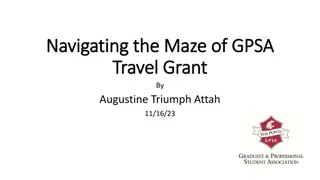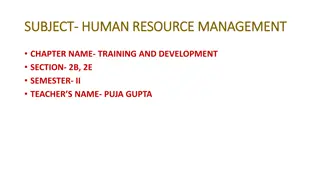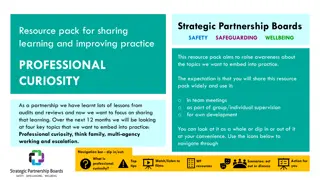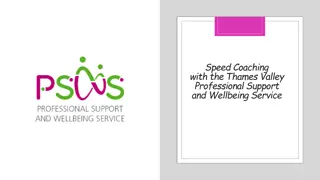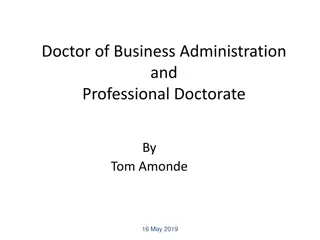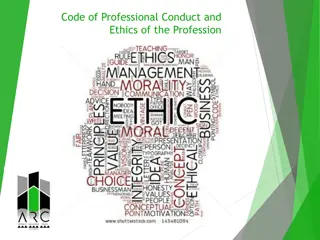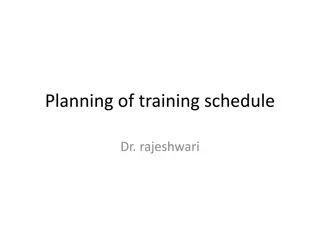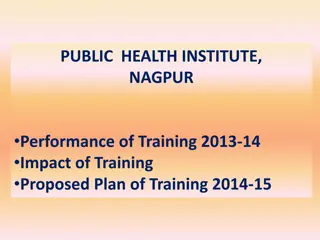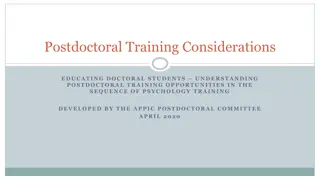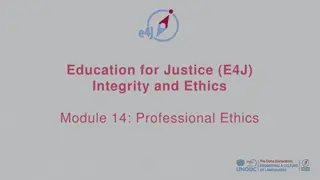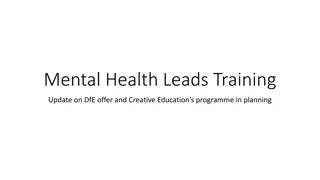Professional Boundaries Training and Examples
Explore the importance of professional boundaries in the context of staff and volunteers within the Catholic Archdiocese of Perth. Learn about the distinctions between personal and professional boundaries, examples of maintaining boundaries, setting boundaries effectively, and guidance questions to navigate challenging situations assertively.
Download Presentation

Please find below an Image/Link to download the presentation.
The content on the website is provided AS IS for your information and personal use only. It may not be sold, licensed, or shared on other websites without obtaining consent from the author. Download presentation by click this link. If you encounter any issues during the download, it is possible that the publisher has removed the file from their server.
E N D
Presentation Transcript
PROFESSIONAL BOUNDARIES Training for staff and volunteers Catholic Archdiocese of Perth
PERSONAL BOUNDARIES PROFESSIONAL BOUNDARIES VS physical, emotional and mental limits legal, ethical and organizational frameworks that protect both clients and employees, or workers, people use to protect themselves from being drawn too much into their clients lives from physical & emotional harm, and from being manipulated or violated by others. 1 and help to maintain a safe working environment. 1 1. RAV n.d.
EXAMPLES PROFESSIONAL BOUNDARIES PERSONAL BOUNDARIES Keeping clients private information confidential Receiving and keeping gifts Inappropriately disclosing your own personal information Avoiding physical contact with clients such as hugging Declining invitations to socialise outside of the work setting Seeking unnecessary information from the client that is not relevant to the service you re providing Inappropriate touching and sexual contact Performing additional/special favours for clients that are outside the scope of your role Shopping for your client in your own time and/or with your own money Keeping information to yourself and not documenting where necessary Adapted from Ausmed 2019
SETTING PROFESSIONAL BOUNDARIES Know the limits of your role as a staff member or volunteer Be assertive let clients know what the limits of your role are Establish your own personal boundaries and recognise your triggers Maintain objectivity through self-reflection (guidance questions) Taken from RAV n.d. and Ausmed 2019
1 GUIDANCE QUESTIONS 1. What is my role in this situation? - E.g. Am I the carer / consultant / service provider or friend? 2. Am I sharing personal information for my benefit or for the benefit of the person I m helping? 3. Are my emotions or feelings about the client clouding my judgement on this issue? - E.g. Strong like or dislike? Transference? 4. Are the client s emotions or feelings clouding our working relationship? - E.g. Am I setting off strong positive/negative feelings in the client? 5. Should I / shouldn t I? If in doubt, don t! 1. Ausmed 2019
SAYING NO ASSERTIVELY WHAT YOU SAY HOW YOU SAY IT TAKE RESPONSIBILITY Adapted from Michel and Fursland 2008, p 4
WAYS OF SAYING NO Reasoned No Direct No Reflecting No The Broken Record Enquiring No Raincheck No Adapted from Michel and Fursland 2008, p 5-6
SCENARIO 1 A client has invited me to be friends on a social networking site. Is it breaching boundaries if I accept? Taken from AASW 2017, 5
SCENARIO 2 I have been working with a particular client for a long time and we have never had any physical contact. Today our professional relationship ended and he asked if he could give me a hug to say thank you. Is this okay? Taken from AASW 2017, 5
SCENARIO 3 During a casual conversation, my client asks me about my personal past experiences (e.g. whether I have ever struggled with alcohol/drug addiction) and also about my personal information (e.g. What suburb do you live in? Where do you work when you are not volunteering?) How should I respond? Taken from AASW 2017, 5
SCENARIO 4 A former client whom I worked with several years ago returned to the Agency today, but was helped by another staff member. I want to know how they are doing and why they have come back. Would it be appropriate to find out by looking up the client s case notes in the database? What if I were to contact the client to ask them directly? Adapted from Australia. Department of Health 2004.
SCENARIO 5 I was helping a client today when they began to cry. Is it ok to hug my client or touch them on the arm to comfort them? Adapted from Ausmed 2019.
QUESTIONS? Adapted from Ausmed 2019.
REFERENCES Australian Association of Social Workers. 2017. Professional Boundaries and Dual Relationships. https://www.aasw.asn.au/document/item/2354 Relationships Australia Victoria. n.d. Maintaining personal and professional boundaries. https://www.relationshipsvictoria.com.au/assets/PDFs/Resources/Tip-Sheets/Maintaining- Professional-Boundaries-Tip-Sheet-19062.pdf Ausmed. 2019. Understanding Professional Boundaries. https://www.ausmed.com.au/cpd/articles/professional-boundaries Australia. Department of Health. 2004. 2.3 Developing and maintaining professional boundaries. https://www1.health.gov.au/internet/publications/publishing.nsf/Content/drugtreat-pubs- front11-fa-toc~drugtreat-pubs-front11-fa-secb~drugtreat-pubs-front11-fa-secb-2~drugtreat- pubs-front11-fa-secb-2-3 Michel, Fiona and Anthea Fursland. 2008. How to Say No Assertively . In Assert Yourself. Western Australia, Perth: Centre for Clinical Interventions. ISBN: 0-9757995-5-X. https://www.cci.health.wa.gov.au/~/media/CCI/Consumer%20Modules/Assert%20Yourself/Asse rt%20Yourself%20-%2006%20-%20How%20to%20Say%20No%20Assertively.pdf
